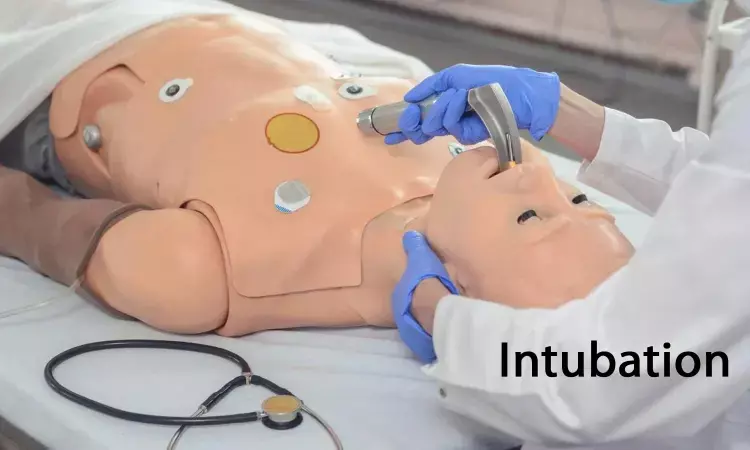- Home
- Medical news & Guidelines
- Anesthesiology
- Cardiology and CTVS
- Critical Care
- Dentistry
- Dermatology
- Diabetes and Endocrinology
- ENT
- Gastroenterology
- Medicine
- Nephrology
- Neurology
- Obstretics-Gynaecology
- Oncology
- Ophthalmology
- Orthopaedics
- Pediatrics-Neonatology
- Psychiatry
- Pulmonology
- Radiology
- Surgery
- Urology
- Laboratory Medicine
- Diet
- Nursing
- Paramedical
- Physiotherapy
- Health news
- Fact Check
- Bone Health Fact Check
- Brain Health Fact Check
- Cancer Related Fact Check
- Child Care Fact Check
- Dental and oral health fact check
- Diabetes and metabolic health fact check
- Diet and Nutrition Fact Check
- Eye and ENT Care Fact Check
- Fitness fact check
- Gut health fact check
- Heart health fact check
- Kidney health fact check
- Medical education fact check
- Men's health fact check
- Respiratory fact check
- Skin and hair care fact check
- Vaccine and Immunization fact check
- Women's health fact check
- AYUSH
- State News
- Andaman and Nicobar Islands
- Andhra Pradesh
- Arunachal Pradesh
- Assam
- Bihar
- Chandigarh
- Chattisgarh
- Dadra and Nagar Haveli
- Daman and Diu
- Delhi
- Goa
- Gujarat
- Haryana
- Himachal Pradesh
- Jammu & Kashmir
- Jharkhand
- Karnataka
- Kerala
- Ladakh
- Lakshadweep
- Madhya Pradesh
- Maharashtra
- Manipur
- Meghalaya
- Mizoram
- Nagaland
- Odisha
- Puducherry
- Punjab
- Rajasthan
- Sikkim
- Tamil Nadu
- Telangana
- Tripura
- Uttar Pradesh
- Uttrakhand
- West Bengal
- Medical Education
- Industry
Can posture of Anaesthesiologist affect outcomes of laryngoscopy and tracheal intubation?

Recent study aimed to compare the ergonomic comfort and posture of anaesthesiologists during laryngoscopy and tracheal intubation in the head-elevated laryngoscopy position (HELP) and with a 25° backup. A total of 48 patients with normal airways and 12 experienced anaesthesiologists participated in the study. The anaesthesiologists' posture was assessed by measuring various joint angles, and their subjective comfort was evaluated using a Likert scale. The Cormack-Lehane (CL) grading, haemodynamic stability, tracheal intubation time, and complications were also compared between the two positions.
Comparison of Posture and Comfort
The findings revealed that both positions, supine HELP and 25° backup HELP, demonstrated comparable anaesthesiologist posture and comfort. However, the 25° backup position significantly improved the Cormack-Lehane grades, with 68% of the patients achieving grade 1 compared to 31% in the supine HELP group. Haemodynamic stability and tracheal intubation time showed no significant differences between the groups, and no complications were reported in either group.
Importance of Patient Positioning
The study also highlighted the importance of proper patient positioning for optimal glottic visualisation and improved tracheal intubation success. The head-elevated laryngoscopy position (HELP) and a 25° backup were proposed to enhance glottic visualisation, and the 25° backup HELP was shown to provide better glottic visualisation and improve the Cormack-Lehane grades. The study concluded that anaesthesiologists' posture and comfort during laryngoscopy and tracheal intubation are similar between supine and 25° backup positions in patients with easy airways.
Study Findings and Limitations
Overall, the study found no significant difference in the posture adopted by anaesthesiologists in either position during laryngoscopy and tracheal intubation. However, the 25° backup position significantly improved Cormack-Lehane grades, providing better glottic visualisation. The time to complete intubation was comparable between the groups, with all intubations performed in a single attempt. The study was conducted with a crossover design, standardised the adjustment of the table height, and employed both subjective and objective assessments, but had limitations related to the sample size and patient selection.
Key Points -
- The findings revealed that both positions, supine HELP and 25° backup HELP, demonstrated comparable anaesthesiologist posture and comfort. However, the 25° backup position significantly improved the Cormack-Lehane grades. Haemodynamic stability and tracheal intubation time showed no significant differences between the groups, and no complications were reported in either group.
- The study highlighted the importance of patient positioning for optimal glottic visualisation and improved tracheal intubation success. It suggested that the head-elevated laryngoscopy position (HELP) and a 25° backup could enhance glottic visualisation. The study concluded that anaesthesiologists' posture and comfort during laryngoscopy and tracheal intubation are similar between supine and 25° backup positions in patients with easy airways. The study found no significant difference in the posture adopted by anaesthesiologists in either position during laryngoscopy and tracheal intubation. However, the 25° backup position significantly improved Cormack-Lehane grades, providing better glottic visualisation. The time to complete intubation was comparable between the groups, with all intubations performed in a single attempt. The study was conducted with a crossover design, standardised the adjustment of the table height, and employed both subjective and objective assessments, but had limitations related to the sample size and patient selection.
Reference –
Mookambika R, Kumar RV, Areti A, Jaya V. Comparing the posture and comfort of anaesthesiologists during laryngoscopy and tracheal intubation in the head elevated laryngoscopy position in supine position and with a 25° backup: A randomised clinical crossover trial. Indian J Anaesth 2024;68:547-52
MBBS, MD (Anaesthesiology), FNB (Cardiac Anaesthesiology)
Dr Monish Raut is a practicing Cardiac Anesthesiologist. He completed his MBBS at Government Medical College, Nagpur, and pursued his MD in Anesthesiology at BJ Medical College, Pune. Further specializing in Cardiac Anesthesiology, Dr Raut earned his FNB in Cardiac Anesthesiology from Sir Ganga Ram Hospital, Delhi.


